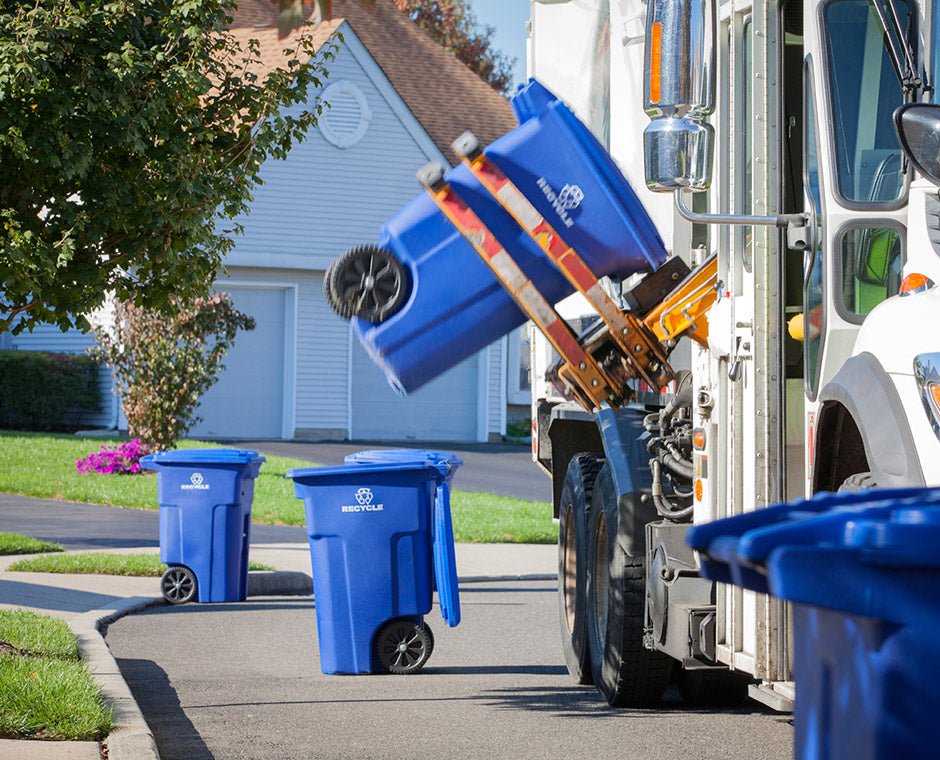

· By Mark Majkrzak
I put my recycling in the blue bin, now what?
Recycling is a complex, expensive and dated process- changed very little since its widespread domestic adoption in the 1970’s. Frankly speaking, it’s due time that we consider significant legislative changes to what we call “recyclable” and how we recycle those goods. To understand the “Why?” of such changes its important to first understand how goods are recycled (or more often, not) in the US.
Most municipalities with curbside recycling programs use “Single Stream Recycling” where all recyclable materials; plastic, paper, cardboard, aluminum, steel, glass, etc are collected from the same bin. The consumer's responsibility is to get those items into such bin and put it on the curb for a weekly pickup. Pretty simple, low obligation for the consumer and why we as a country have defaulted to single stream recycling. This convenient-for-the-consumer strategy was failed from the earliest days. By requiring very little from the consumer, we instead place tremendous load difficulty and expense on the recycler.
From the bin on your curbside the goods first go into a truck, where they are compacted with the waste from hundreds of other homes into a wet, contaminated cluster. The orange juice bottles, pizza trays, milk cartons and wine bottles from the neighborhood finally show up at either a sorting center, or worse transfer station. If the former, those goods are sent on miles of conveyor belts where hundreds or workers meticulously pick through that same wet cluster to find the very few valuable items- aluminum, steel, cardboard and an increasingly small number of plastics. From there the valuable items like aluminum are made into a block where they are sent to a smelting facility to be made into ingots, and finally into new goods. The low value and difficult to recycle items like plastic are landfilled, recycled at only 9%. If the later, multiple trash trucks from multiple cities and neighborhoods pile all of their own wet clusters into semi trucks where they too are ultimately sorted, by a few hundred other workers. This busy machine is truly garbage in, garbage out.
Instead now consider the burden, cost and operational challenge removed if a more deliberate “Multi Stream” recycling model was widely adopted. This marginally less-convenient-for-the-consumer model would require that instead of grouping all recycling materials into one, we have a few bins; papers, plastics, steel, aluminum. Now when that truck arrives at the sorting center and the doors open a nice compacted brick of aluminum cans rolls out- ready to be made into new aluminum cans. Clean sorted materials are almost immediately ready for their next life without the additional processing required in single stream recycling.
This multi-stream model is used extensively in other developed countries where recycling rates far exceed their North American peers. Countries like Japan, one of the most successful recycling success stories uses up to 7 containers and a community based program. A program where instead of each house having their own bin, the street or block has a set of bins. Seattle, Dallas, Boise piloted such programs in 2021 successfully. Seattle now boasts one of the best recyclings rates in the US at over 56% with their own Three Stream recycling program.
For now however, while legislation catches up consider a few small changes:
- Wash all food scraps, debris and other materials from recycled goods
- Consider less plastic and more valuable materials like aluminum and steel
- Collect and return your aluminum cans independently, and get paid to do it!
- Flatten your cardboard boxes and dispose of them all one day every few weeks
